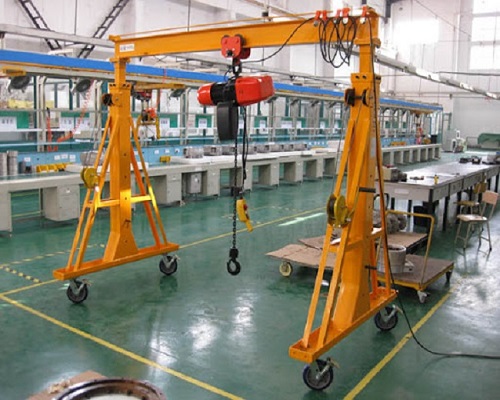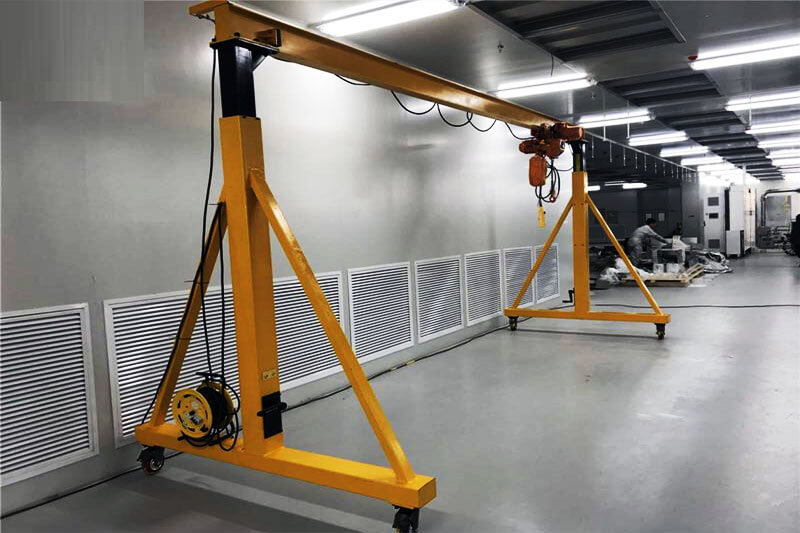Maintenance Methods of Portable Gantry Crane
Portable gantry crane is a movable gantry lifting equipment with compact structure, easy operation, and can be quickly installed and disassembled in different places. This kind of crane is usually made of high-strength steel and is lightweight, durable, safe and reliable. It is widely used in bridges, construction, chemical industry, electric power and other fields.

Portable gantry cranes are mainly composed of main beams, outriggers, pulley blocks, hooks, electrical control systems and other parts. Among them, the main beam is the load-bearing structure of the crane, which is usually welded with high-strength steel and has sufficient strength and stability; the outrigger is the support structure connecting the main beam and the ground, which can withstand the weight of the crane and various external forces; The pulley block is composed of multiple pulleys and is used to change the direction of the wire rope and realize the lifting movement of the hook; the hook is the main working mechanism of the crane and is used for lifting goods; the electrical control system consists of various sensors, controllers and motors, etc. Composed to control the movement and operation of the crane.
Advantages of Portable Gantry Crane
1. It can be quickly installed and disassembled in different places, convenient for transportation and transfer, and improved usage efficiency.
2. Adopting an electrical control system, the operation is simple and easy to understand, and can meet different levels of operation needs.
3. Reasonable design and stable structure can ensure safe and reliable work in various complex environments.
4. The manufacturing cost is low, which can save enterprises a lot of money.

Maintenance Method of Portable Gantry Crane
1. Regular inspection: Check the crane regularly, including the wear, looseness and corrosion of various components, and find and deal with problems in time.
2. Cleaning and maintenance: Keep the crane clean and regularly clean dust and debris on the surface of the equipment to prevent corrosion and wear.
3. Lubrication and maintenance: Regularly lubricate and maintain the various components of the crane, such as bearings, pulleys, etc., to maintain their good operating condition.
4. Adjustment and calibration: Adjust and calibrate the crane's electrical control system and mechanical components to ensure its normal operation and accuracy of operation.
5. Maintenance: Damaged or severely worn parts should be repaired or replaced in time to ensure the normal operation of the crane.
6. Safe operation: During use, the operating procedures should be strictly followed to avoid safety accidents. At the same time, operators are regularly trained and educated to improve their safety awareness and operating skills.
If you have any customized requirements for portable gantry cranes, please contact us and we will provide you with a free design plan.
